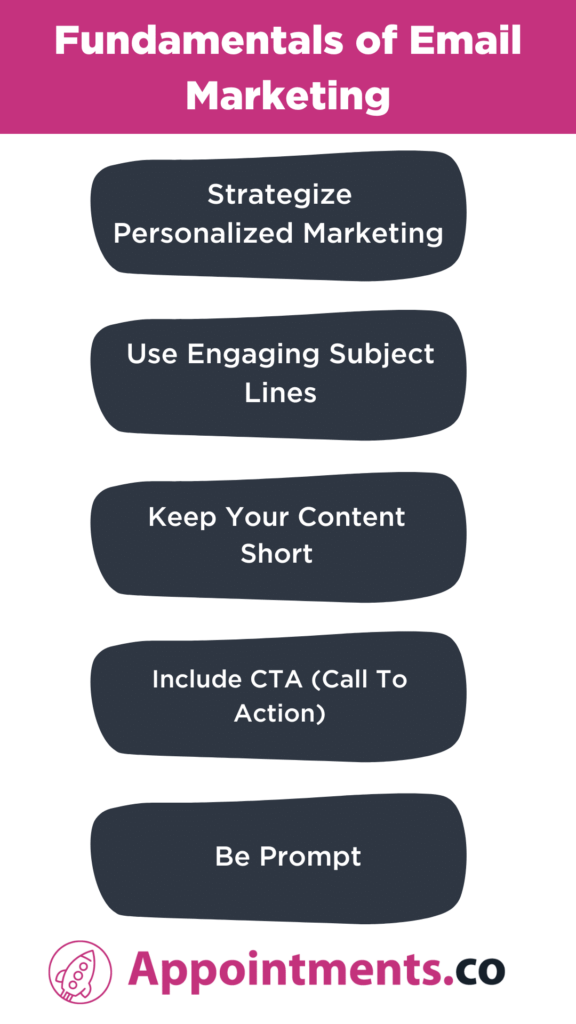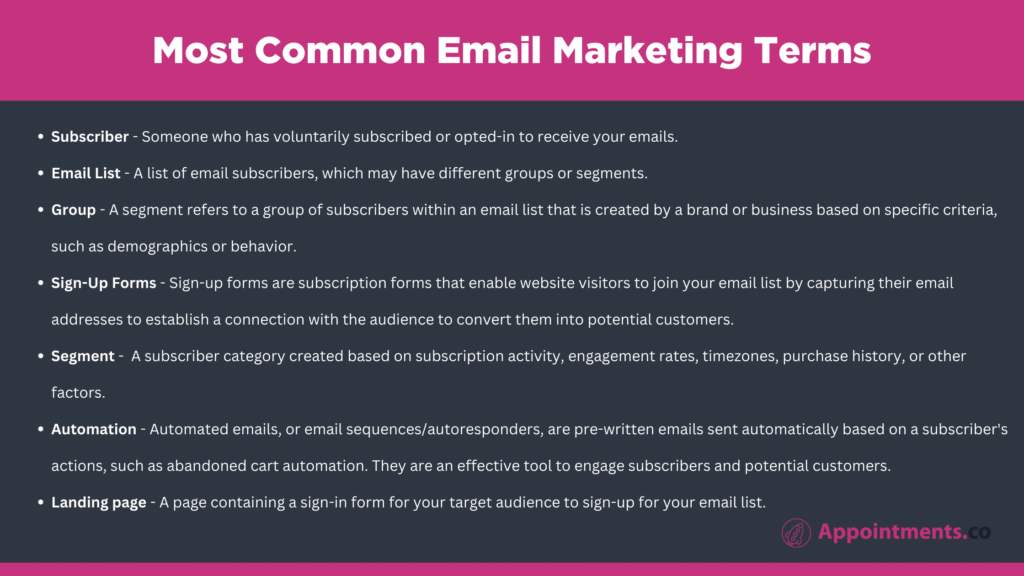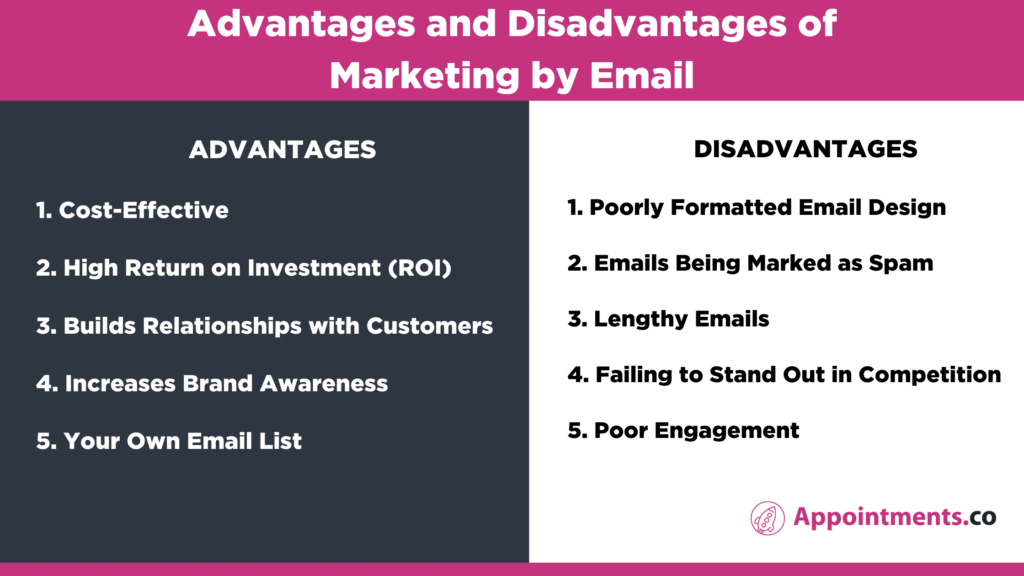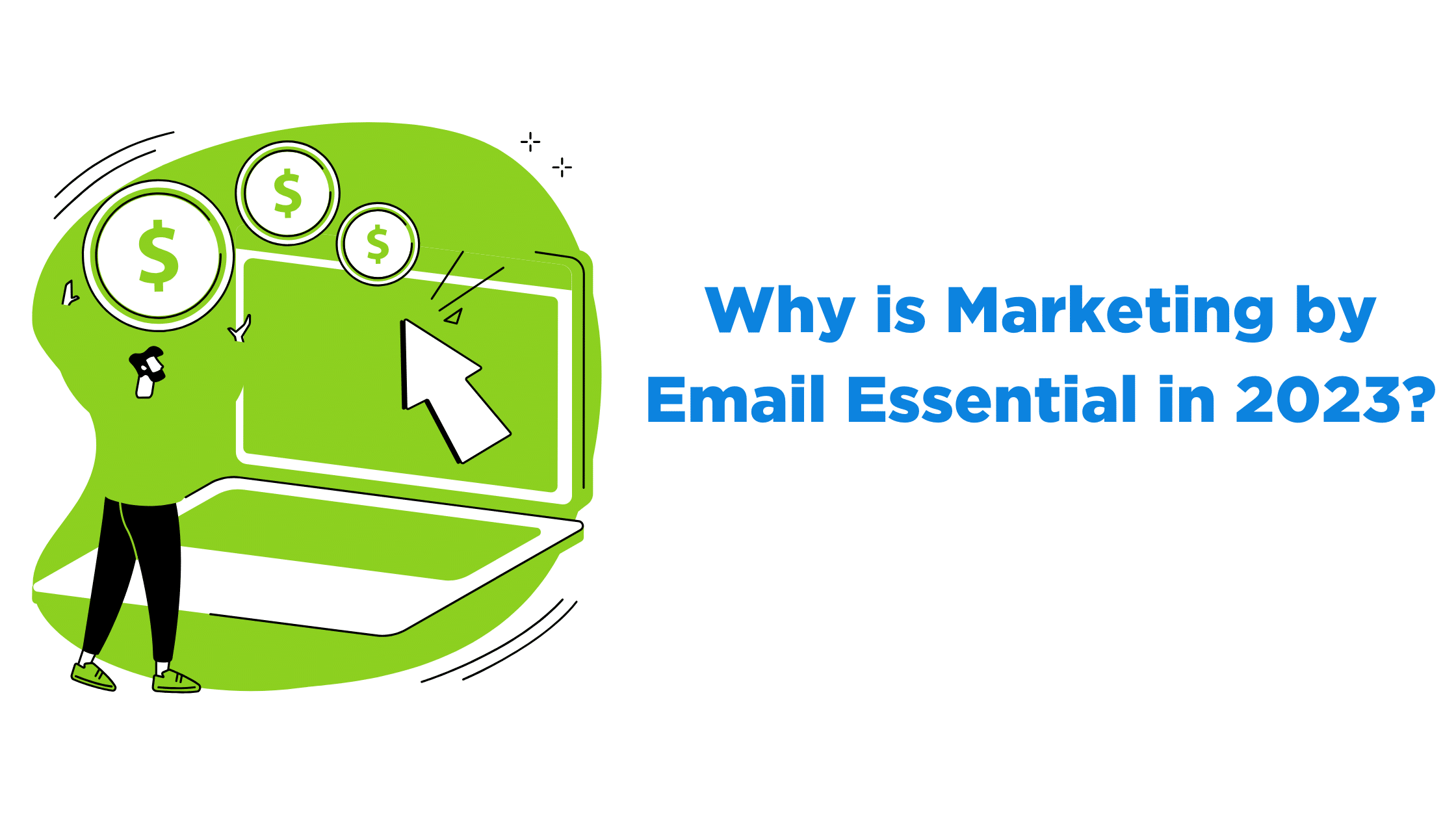Email marketing is an important way of connecting with people in our daily lives, and it can also be a powerful tool for businesses. By incorporating email campaigns into your marketing strategy, you can gain increased brand recognition, better customer relationships, and higher sales.
In this article, you’ll see why email marketing is so important, and how it can help take your business to new heights.
Table of Contents:
- Definition of Email Marketing
- Fundamentals of Marketing by Email
- Email Marketing Terms
- Email Metrics: How To Measure the Success of Marketing by Email
- Advantages of Marketing by Email
- Disadvantages of Marketing by Email
Definition of Email Marketing
Email marketing is about reaching out to your subscribers directly via email, and giving them valuable information about your products or services. This helps to build a relationship with them and earn their trust. Additionally, you can use emails to persuade them to take a desired action, such as buying a product, scheduling a demo, or signing up for an event. The key is to personalize your emails to make your subscribers feel special and valued.
Fundamentals of Marketing by Email

To make the most of your email marketing efforts, it’s important to start with the basics. These foundational tips can lay the groundwork for your campaign, and help you achieve better results.
1. Strategize Personalized Marketing
Marketing by email is a common form of marketing, and it can be challenging to stand out. Personalize your emails by addressing your recipients by name and showing the human side of your brand.
2. Use Engaging Subject Lines
To boost email open rates, it’s important to use compelling subject lines that are relevant and not spammy. If users feel deceived, they may unsubscribe or mark your emails as spam, which can hurt your ability to reach their inbox again in the future.
3. Keep Your Content Short
Since most people read emails on their mobile devices, it’s important to keep your message short and sweet. If you have a lot of information to share, consider directing users to a blog post or landing page instead.
4. Include CTA (Call To Action)
To make sure your email recipients take action, it’s important to include strong calls-to-action (CTAs) in your emails. Place your CTAs after the first paragraph and again at the end to ensure they’re seen. This strategy is similar to how CTAs are included above the fold on landing pages.
5. Be Prompt
Deliver quality content to those who are genuinely interested in your business, rather than buying email lists, which is illegal and unprofitable. Always fulfill your promises by providing valuable content to your audience.
Email Marketing Terms
Here is an email marketing glossary to help you easily understand the definitions of the key terms. It can be a great help for you to plan your marketing by email strategy with confidence, even if you’re new to this field.

1. Subscriber – Someone who has voluntarily subscribed or opted-in to receive your emails.
2. Email List – A list of email subscribers, which may have different groups or segments.
3. Group – A segment refers to a group of subscribers within an email list that is created by a brand or business based on specific criteria, such as demographics or behavior.
4. Sign-Up Forms – Sign-up forms are subscription forms that enable website visitors to join your email list by capturing their email addresses to establish a connection with the audience to convert them into potential customers.
5. Segment – A subscriber category created based on subscription activity, engagement rates, timezones, purchase history, or other factors.
6. Automation – Automated emails, or email sequences/autoresponders, are pre-written emails sent automatically based on a subscriber’s actions, such as abandoned cart automation. They are an effective tool to engage subscribers and potential customers.
7. Landing page – A page containing a sign-in form for your target audience to sign-up for your email list.
Email Metrics: How To Measure the Success of Marketing by Email
To see if your email marketing efforts are successful, you must measure your progress using tools and processes, such as sales figures, email service provider reports, and website analytics. Many email marketing tools have built-in features that track metrics, like open rates, click-through rates, forwards, unsubscribes, and email marketing conversion rates. By analyzing this data, you can adjust your strategy and improve your campaigns over time. The key is to use the data to make informed decisions that lead to better results.
1. Open Rate
Ever wonder how to tell if people are actually reading the emails you send? One way to track this is by monitoring the download of tracking images inside each email. However, not all email clients download images automatically, so you might not get an accurate count of opens. In addition, some email clients only display plain text and no images. So while open rates can still be useful, it’s important to keep these limitations in mind and consider other engagement metrics.
2. CTR – Click-Through Rate
Another essential email metric to track is click-through rates (CTR), which tell you how many people clicked on a link in your email. Email service providers typically use a tracking service to redirect each link, making it easy to record and analyze CTR data. By monitoring your CTR, you can gain valuable insights into the effectiveness of your email marketing campaigns and make adjustments as needed to improve engagement and drive conversions.
3. Forwards
There is a function called “send to a friend” that can be used by people to forward emails. So how many of your email subscriber lists use this function to forward your emails?
4. Unsubscribes
How many of your subscribers or target audience unsubscribed from receiving further emails using the built-in system of email marketing software?
5. Conversion Rates
Once you have established your email campaign goals and identified the key performance indicators to measure their success, you can start planning your HTML email design. However, keep in mind that the design requirements for emails are different from those for websites, even though they use similar technologies, like HTML and CSS.
It’s crucial to track changes in performance metrics from one campaign to another, rather than just focusing on the raw numbers. With each campaign, you can make tweaks to your email marketing strategies, including content, design, and even the time and day of sending. Analyzing historical data can help determine if your changes have been successful or not.
Advantages and Disadvantages of Marketing by Email

Advantages:
1. Cost-Effective
Unlike other marketing methods, marketing by email can be a more budget-friendly option as it doesn’t require advertising fees, printing costs, or media space expenses, making it a cost-effective choice.
2. High Return on Investment (ROI)
Email marketing is a cost-effective way to drive revenue for your business. By targeting individuals who have already shown an interest in your business, you can encourage them to make purchases through a simple call to action and a link to check out included in your emails. This strategy is particularly useful for small business owners looking to grow their businesses without spending a lot of money.
3. Builds Relationships with Customers
Marketing by email is a powerful method for building strong customer relationships. By sending targeted emails that resonate with your audience, you can improve communication, and gain valuable insights into customer preferences. Regularly sending such emails can foster customer loyalty, and attract potential customers.
4. Increases Brand Awareness
Regular communication with customers is key to increasing brand awareness. Targeted email campaigns can keep customers engaged and generate qualified leads. Automating certain marketing by email tasks can boost productivity and improve ROI.
5. Your Own Email List
Marketing by email offers the advantage of complete ownership of your contact list, which consists of individual subscribers who have signed up to receive your regular business updates. Unlike social media, where follower counts are constantly changing and are difficult to manage, email marketing allows you to maintain your contact list regardless of any changes to your email provider or address. This control over your email list gives your business an edge with a targeted audience for your emails.
Disadvantages:
1. Poorly Formatted Email Design
Nowadays, people access their email accounts on various devices, including phones, tablets, and computers. If you don’t design your email to be compatible with each email marketing platform, your customers may end up viewing a poorly formatted version of your email.
Since email marketers cannot determine the operating system of the recipient’s device, emails that were once visually appealing may have broken links, missing images, and logos. These issues can frustrate the recipient and result in the email being deleted, particularly if it’s mistaken for spam or a scam. Ultimately, poorly formatted emails are difficult to read and offer little value to the recipient.
2. Emails Being Marked as Spam
Email marketers marketing by email should be well aware of what considers spam. We receive tons of worthless emails in our inboxes every day, and they often end up in the spam folder. These types of messages provide no value and are quickly deleted by most recipients. Sending poor-quality or unwanted emails is usually a waste of time and can harm a company’s reputation.
3. Lengthy Emails
If the size of your email is too long and takes time to load or just stopped loading at all. At times like that your potential customer may lose interest and it causes a loss of customers to your business.
4. Failing to Stand Out in Competition
Marketing by email is a widely used method, which means that your email campaigns won’t be the only ones in the inbox of your target audience. To distinguish yourself from competitors, you must invest in skilled copywriters or offer special promotions to grab their attention.
5. Poor Engagement
To keep your email marketing effective, you need to continuously engage your audience. Just because a customer signs up for your emails doesn’t mean they’ll keep opening them or clicking through to your site. You need to provide valuable content and promotions to maintain their interest, or you’ll end up with high unopened rates or a lot of unsubscribes.
How do I market my product through email?
To write a marketing email that stands out, you should:
1. Use engaging subject lines
2. Use non-generic opening lines
3. Keep your content short
4. Clear call to action
5. Send follow-up emails at regular intervals.
How is email used in marketing?
Marketing by email is an effective method of marketing to make your customers aware of your new products, discounts, offers, and other services.
What are the 3 types of email marketing?
The top 3 important email types in marketing includes:
1. Newsletter emails
2. Transactional emails
3. Behavioral emails
Related Reads
- The 12 Best Email Marketing Strategies in 2023
- What Is Email Marketing Services – 5 Best Services Reviewed
- Best Guide To Elevate Your Email Marketing Skills in 2023
- Best Email Marketing Platforms for Your Business in 2023
Bottom Line
Creating successful marketing by email campaigns can be challenging, but with proper planning, you can take control of the process. By implementing a well-planned email campaign strategy, you can track metrics and achieve measurable results. Planning is crucial to achieving the best possible outcomes, so take control of your marketing by email strategy by creating a campaign calendar.
Need help getting started? reach out to appointments.co for more marketing-related information and appointments-related queries.
Illustrations – Storyset



